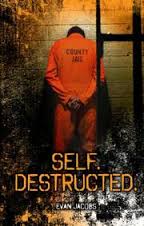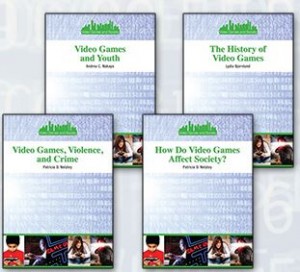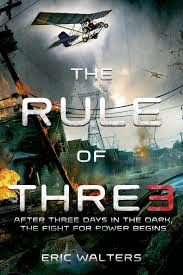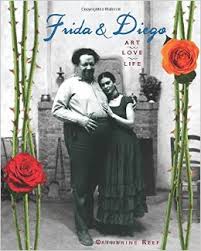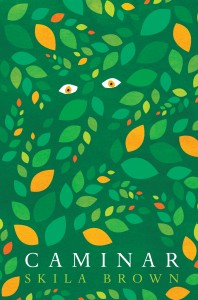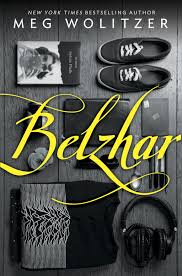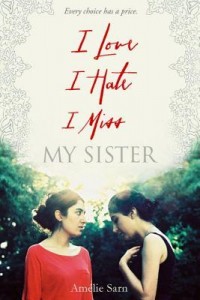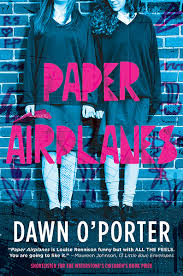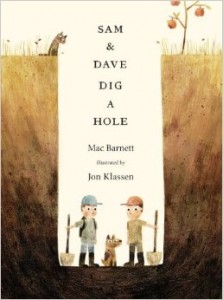
Barnett, Mac. Sam and Dave dig a hole. Somerville, MA: Candlewick Press, 2014. 978-0763662295. 40p. $16.99. Gr. PK-2.
Sam and Dave are on a mission: this mission has to have something spectacular. They start to dig and dig and dig and… well you get the picture. Nothing…..nothing in their eyes, yet the day is pretty spectacular after all. Just got this book in and tested it with my Kindergarteners. They laughed, the yelled at the boys to turn around and just loved it. So I guess it made the grade.
Picture Book Lourie Stewart, Dunbar and Connellsville Township Elementary Schools
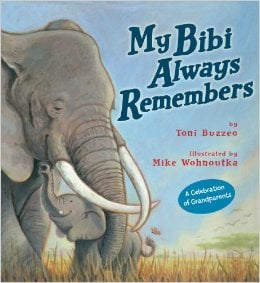
Buzzeo, Toni. My Bibi always remembers. New York: Hyperion Books, 2014. 978-142318385-3. 32 p. $16.99. Gr. PK – K.
Little Tembo, a baby elephant, is thirsty and her herd cannot find any water. But Bibi, grandma, “remembers the way to wet.” As Bibi leads them across the parched savannah, Tembo happily follows, every now and then getting distracted by her own memories of games she loves to play. This book is a wonderful reminder that age and experience is a sure way to find the leader.
Lourie Stewart Dunbar and Connellsville Township Elementary Schools.
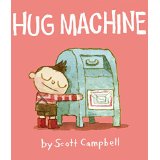
Campbell, Scott. Hug Machine. 978-1442459359. New York: Atheneum, 2014. $16.99. 40p. Gr. PK-2.
Campbell has previously illustrated If Dogs Ran Free by Bob Dylan, Zombie in Love by Kelly DiPucchio, and East Dragon West Dragon by Robyn Eversole. In his author/illustrator debut Campbell brings us the delightful Hug Machine, a little dude who hugs EVERYTHING. He sets off to share his incredible hugging magic with joggers, the mailman, folks mowing the lawn, ice cream trucks, fire hydrants, bears, dog walkers and their dogs, trees, and even shows us how to successfully hug a porcupine and a whale. We learn what he eats to refuel and find out what happens when a mega-hugger gets tired from all that hugging. The colorful and engaging illustrations are kooky and so much fun and sure to be a big hit with the little hug machines in your life.
We were super lucky to have Scott Campbell visit our school on his Hug Machine tour thanks to our amazing local book store, Children’s Book World of Haverford! To prep the kids for his visit we used the activity sheet and watched Scott’s hilarious 2-minute hug workout video from the publisher’s page: http://authors.simonandschuster.com/Scott-Campbell/48911045. Scott is a natural with the little ones, and showed us some of his childhood book creations, read aloud Hug Machine, and created Hug Machine masterpieces on the spot by audience request: Hugging the Empire State Building! A volcano! I highly recommend you catch one of his appearances if he swings by your area, and snatch up his other books, they are all high quality.
Picture Book Kathie Jackson, Plymouth Meeting Friends School
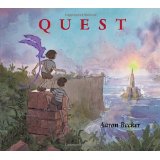
Becker, Aaron. Quest. Massachusetts: Candlewick Press, 2014. 978-0-7636-6595-1. 40p. $15.99. Gr. K-3
The continuation of Journey, an epic fantasy adventure told completely with incredible illustrations. This wordless picture book will provide every child with a completely different story. With their markers each character draws their pieces of illustrations to move them further in their quest to rescue the king. Aaron Becker not only is a detailed and talented artist he also provides educational pieces on his website to build understanding and use of his book. Every time a child picks up this book they will find a different detail. A great resource for writing prompts and discussions.
Wordless/Fantasy Denise Naumann, Eisenhower Elementary

Van Laan, Nancy. Forget Me Not. New York: Schwartz & Wade, 2014. 978-0449815434. 40p. $15. Gr. K-3.
A beautiful book about a young girl named Julia whose grandmother is suffering the beginning signs of Alzheimer’s disease. Julia’s describes the many warm experiences of visiting her grandmother: the family meals, joyful games and picking forget me nots from her garden to place on the table. She watches her slowly begin to forget names and memories until she must move out of her house. She vows to help her remember by bringing her forget me nots. It is a compassionate story that gently introduces the young reader to the concept of dementia and Alzheimer’s disease which they may be experiencing with their own elderly relatives.
Picture Book Robin Bartley, Davis Elementary
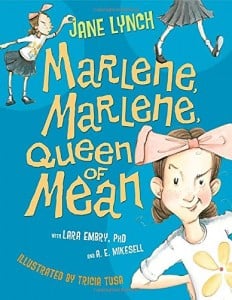
Lynch, Jane. Marlene, Marlene, Queen of Mean. New York: Random House, 2014. 978-0385379083. 32p. $15. Gr.K-4.
Written in rhyme, this is the humorous story of a bully named Marlene who terrorizes her classmates until one boy sees through her. Freddy exposes her secret. Everyone watches as her anger disintegrates into fear and tears as Marlene loses her power. Since “Being a jerk, will no longer work” she decides to just be herself. A perfect read aloud and discussion for Kindergarten or first grade or as an introduction to bullying unit for third or fourth grade.
Picture Book Robin Bartley, Davis Elementary

